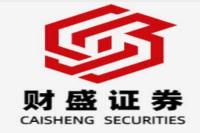低空经济与车路云:万亿级新基建浪潮下的投资机遇 (Low-Altitude Economy and Vehicle-Road-Cloud Integration: Investment Opportunities in a Trillion-Dollar New Infrastructure Wave)
Meta Description: 探索低空经济和车路云的巨大潜力,分析其在物流领域的应用,解读政策支持,识别具备技术壁垒和市场优势的投资机会,并深入探讨潜在风险。
Whoa, hold on to your hats, folks! The future of transportation isn't just about self-driving cars; it's about a whole new dimension – the low-altitude economy and the revolutionary power of vehicle-road-cloud (V2X) integration. We're talking a trillion-dollar market poised to reshape logistics, urban planning, and even personal travel. This isn't some far-off sci-fi fantasy; it's happening now, driven by groundbreaking technological advancements and supportive government policies. This isn't just another market analysis; it's a deep dive into the heart of this transformative sector, exploring the opportunities and challenges, the players, and the potential for massive returns. Forget the hype; we're delving into the nitty-gritty, examining real-world applications, analyzing the competitive landscape, and ultimately, empowering you with the knowledge to navigate this exciting new frontier. Get ready to discover why industry experts are buzzing about the low-altitude economy and V2X, and how you can capitalize on this burgeoning opportunity. Let's unlock the secrets of this trillion-dollar goldmine together!
低空经济:万亿蓝海 (Low-Altitude Economy: A Trillion-Dollar Blue Ocean)
The low-altitude economy (LAE) is no longer a futuristic concept; it's rapidly becoming a reality. Think about it: drones delivering packages, autonomous air taxis zipping through cityscapes, and agricultural drones optimizing crop yields. This isn't science fiction; these are real-world applications already emerging, promising a revolution across multiple sectors. The 2024 joint announcement by the central and state governments regarding the “Action Plan to Effectively Reduce the Overall Cost of Logistics Across Society” clearly highlights this shift, emphasizing the importance of integrating low-altitude solutions into the logistics ecosystem. This isn't just a trend; it’s a strategic national initiative to boost efficiency and productivity.
The potential applications are mind-boggling. Imagine faster, more efficient delivery services, bypassing congested roads and reaching remote areas with ease. Picture emergency services utilizing drones for rapid response, potentially saving lives. Envision precision agriculture, where drones monitor crop health and apply pesticides with pinpoint accuracy, reducing waste and improving yields. The list goes on and on, showcasing the transformative potential of LAE across various industries.
But it's not just about the technology; it's also about the infrastructure. The development of air traffic management systems, charging stations, and maintenance facilities is crucial for the LAE to fully flourish. This necessitates significant investment, creating numerous opportunities for companies involved in infrastructure development, technology provision, and operational services.
低空经济的驱动因素 (Drivers of the Low-Altitude Economy)
- Technological Advancements: Improvements in drone technology, battery life, autonomous navigation, and sensor capabilities are paving the way for wider adoption.
- Government Support: Policies promoting the development and adoption of LAE technologies are creating a favorable environment for growth. The aforementioned Action Plan is a testament to this commitment.
- Rising Demand: The need for faster, more efficient, and cost-effective logistics and transportation solutions is driving the demand for LAE services.
- Environmental Concerns: The potential for reduced carbon emissions compared to traditional transportation methods is making LAE a more attractive option.
车路云协同:智能交通的基石 (Vehicle-Road-Cloud Integration: The Cornerstone of Intelligent Transportation)
Vehicle-Road-Cloud (V2X) integration is another pivotal element in the future of transportation. This interconnected system uses communication technologies to allow vehicles, infrastructure, and cloud platforms to exchange data in real-time. The result? Enhanced safety, improved traffic flow, and the foundation for autonomous driving.
Think of it as a massive, intelligent network, constantly monitoring traffic conditions, predicting potential hazards, and optimizing routes to minimize congestion and travel time. The implications for urban planning are profound; V2X can help cities design smarter, more efficient transportation systems that reduce traffic jams and improve overall quality of life.
车路云的优势 (Advantages of V2X)
- Enhanced Safety: Real-time data sharing helps prevent accidents by alerting drivers to potential hazards.
- Improved Traffic Flow: Optimized routing and traffic management reduce congestion and travel times.
- Autonomous Driving Enablement: V2X provides the crucial communication infrastructure needed for autonomous vehicles to operate safely and efficiently.
- Smart City Applications: V2X data can be used to improve urban planning, optimize resource allocation, and enhance overall city management.
投资机遇与挑战 (Investment Opportunities and Challenges)
The convergence of LAE and V2X represents a massive investment opportunity. The market is projected to experience explosive growth in the coming years, creating lucrative opportunities for companies involved in various aspects of the value chain. However, this is not without its challenges.
Opportunities:
- Technology Providers: Companies developing and providing drone technology, autonomous vehicle systems, and V2X communication infrastructure will be at the forefront of this expansion.
- Infrastructure Developers: The construction of charging stations, maintenance facilities, and air traffic management systems will create significant investment opportunities.
- Service Providers: Companies offering drone delivery services, air taxi operations, and other related services will benefit from the growing demand.
Challenges:
- Regulatory Hurdles: The development of clear and consistent regulations is crucial for the safe and responsible deployment of LAE and V2X technologies.
- Technological Limitations: Further advancements in battery technology, autonomous navigation, and sensor capabilities are still needed.
- Public Acceptance: Overcoming public concerns about safety and privacy is essential for widespread adoption.
- Competition: The rapid growth of the industry will attract significant competition, requiring companies to differentiate themselves through innovation and strategic partnerships.
案例研究: 交通信息化公司 (Case Study: Transportation Informatics Companies)
Several companies are already making strides in this field. Some are developing cutting-edge drone technologies, while others are building the crucial infrastructure needed for V2X communication. Those with a strong technological moat and established market position are likely to be the early winners. The key is to identify companies with a clear competitive advantage, a strong track record of innovation, and a robust business model. Careful due diligence is crucial before making any investment decisions.
常见问题解答 (FAQ)
Q1: How safe are drones and autonomous vehicles?
A1: Safety is paramount. Robust safety protocols, rigorous testing, and advanced sensor systems are essential to mitigate risks. Ongoing technological advancements are continuously enhancing safety levels.
Q2: What are the environmental impacts of LAE and V2X?
A2: While some energy consumption is involved, LAE and V2X have the potential to significantly reduce carbon emissions compared to traditional transportation methods, especially in last-mile delivery and urban transport.
Q3: What are the regulatory challenges facing the industry?
A3: Establishing clear safety standards, airspace management protocols, and data privacy regulations are ongoing challenges that need collaborative solutions between government and industry.
Q4: What are the potential risks associated with investing in this sector?
A4: Technological disruption, intense competition, and regulatory uncertainty are significant risks to consider. Thorough due diligence and a diversified investment strategy are recommended.
Q5: How can I identify promising investment opportunities in this field?
A5: Focus on companies with strong technological capabilities, a clear competitive advantage, and a robust business model. Look for those with a proven track record and a clear path to profitability.
Q6: What is the long-term outlook for LAE and V2X?
A6: The long-term outlook is extremely positive. As technology continues to advance and regulatory frameworks mature, the LAE and V2X are poised to transform transportation and logistics, creating significant economic opportunities and improving quality of life globally.
结论 (Conclusion)
The low-altitude economy and vehicle-road-cloud integration represent a once-in-a-generation opportunity. The potential for transformative change across multiple sectors is undeniable. While challenges remain, the long-term outlook is extremely optimistic. By carefully analyzing the market, identifying promising companies, and understanding the risks, investors can capitalize on this exciting new frontier and participate in shaping the future of transportation. It’s time to take flight and embrace the possibilities of this trillion-dollar revolution.



